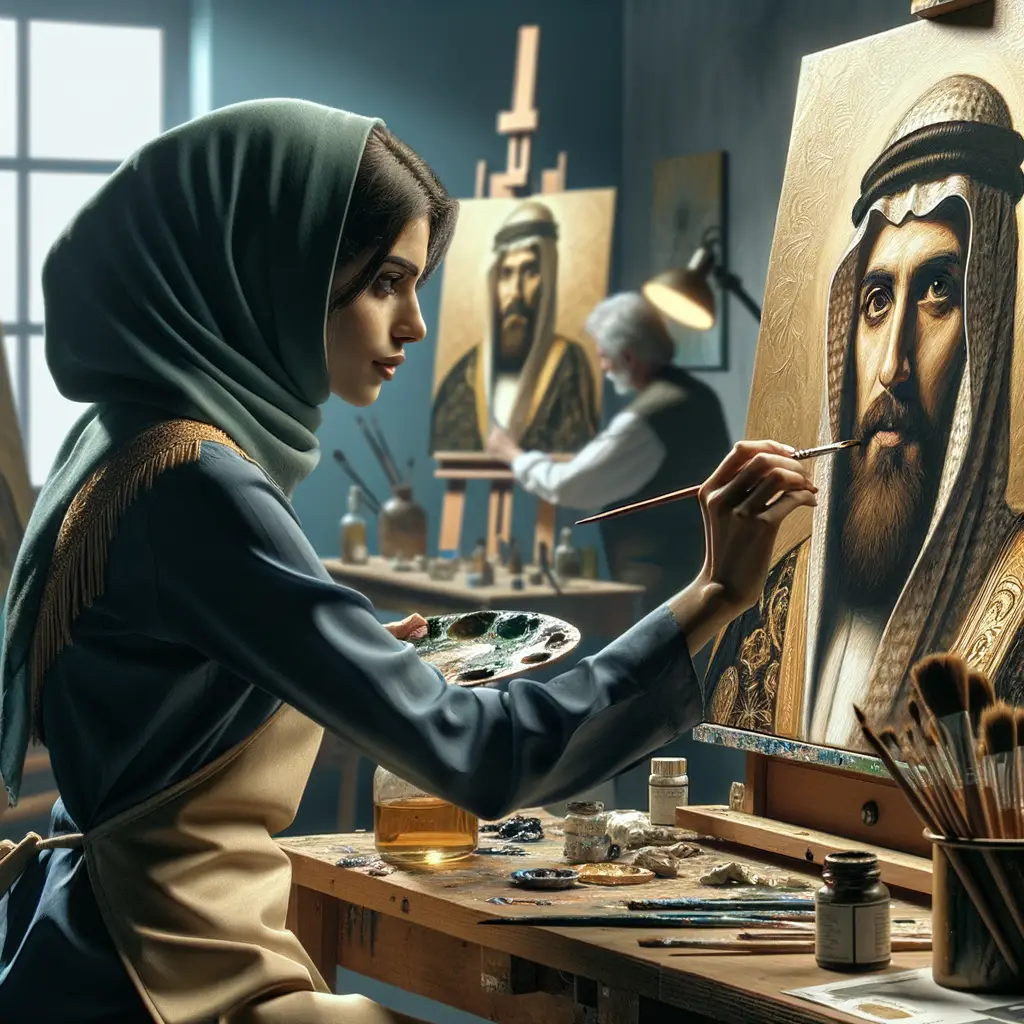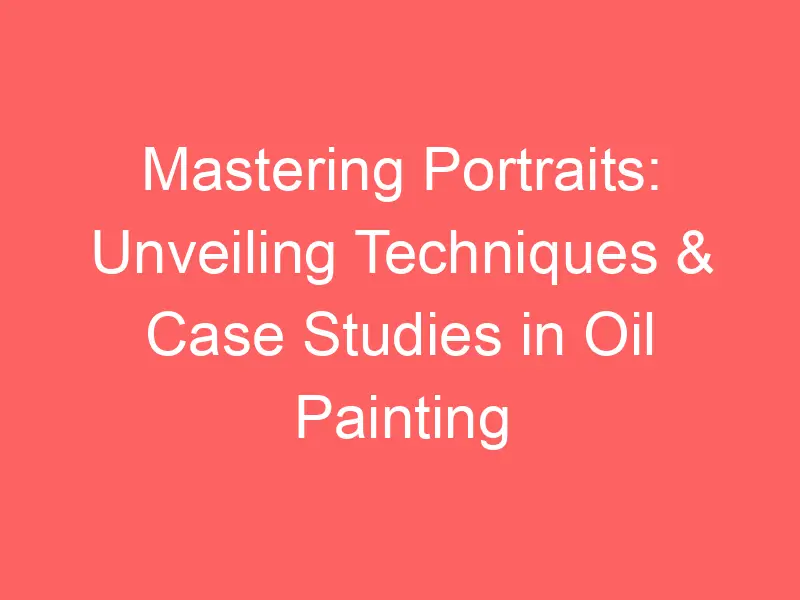
Introduction to Oil Painting Techniques
Welcome to the fascinating world of oil painting! This art form has been loved by artists for centuries due to its versatility and vibrant colors. In this post, we will explore the basics of oil painting, its techniques, and the materials required to get started.
-
Overview of Oil Painting
Oil painting is a type of slow-drying paint that consists of particles of pigment suspended in a drying oil, commonly linseed oil. The viscosity of the paint can be modified by the addition of a solvent such as turpentine or white spirit, and varnish may be added to increase the glossiness of the dried oil paint film. Oil paints have been used in Europe since the 12th century for simple decoration, but were not widely adopted as an artistic medium until the early 15th century.
-
Basic Techniques in Oil Painting
There are several techniques that artists use when painting with oils. Some of the most common include:
- Glazing: This involves applying a thin layer of transparent oil paint over a dried, opaque layer of paint. This technique can create a luminous effect.
- Impasto: This is a technique where paint is laid on an area of the surface very thickly, usually thick enough that the brush or painting-knife strokes are visible. It adds texture and depth to the painting.
- Scumbling: This is a method of applying a very thin layer of lighter, semi-opaque or opaque oil paint over a dried layer of paint. This technique can add a sense of depth and volume.
-
Materials Required for Oil Painting
Before you start oil painting, you’ll need to gather a few essential materials:
- Paints: You’ll need a basic set of oil paints. This usually includes colors like white, black, red, blue, yellow, and brown.
- Brushes: A variety of brushes is essential for oil painting. Brushes come in different shapes and sizes, each serving a unique purpose.
- Canvas: This is the surface you’ll paint on. Canvases come in various sizes and are usually pre-primed.
- Palette: This is where you’ll mix your paints. Palettes can be made of wood, glass, or acrylic.
- Palette Knife: This tool is used for mixing paint colors, mediums, additives, and for removing paint from the palette.
- Easel: This is a stand used to hold your canvas while you paint.
Now that you have a basic understanding of oil painting, its techniques, and the materials required, you’re ready to start your journey into this beautiful art form. Remember, practice makes perfect, so don’t be afraid to make mistakes and learn from them. Happy painting!
The Art of Oil Painting Portraiture
Oil painting portraiture is a captivating form of art that has been appreciated for centuries. It involves the use of oil paints to create lifelike representations of individuals. This section will delve into the understanding of portraiture art, its definition, and history.
Understanding Portraiture Art
Portraiture art is a unique genre that focuses on the depiction of humans. It is a way for artists to capture the essence, character, and personality of their subjects. Let’s explore more about this fascinating art form.
- Definition of Portraiture Art
- History of Portraiture Art
Portraiture art is a genre in painting where the artist focuses on the depiction of a human subject. The primary purpose is not just to show the physical features, but also to express the personality, character, and even the mood of the person. It’s a way of capturing the essence of a person in a still image. This form of art allows us to get a glimpse into the subject’s life and times, making it a fascinating study of human nature and history.
Portraiture art has a rich history dating back to ancient times. The earliest portraits can be traced back to the Egyptians, who painted portraits on their mummies’ sarcophagi. In the Middle Ages, portraiture was primarily used to depict religious figures. However, during the Renaissance, artists like Leonardo da Vinci and Rembrandt began to focus on capturing the individuality and personality of their subjects, leading to the development of the modern portraiture we know today. Over the centuries, portraiture has evolved, with artists experimenting with different styles, techniques, and mediums. Today, it remains a popular genre, appreciated for its ability to capture the essence of humanity. For more detailed information, you can visit the Wikipedia page on portrait painting.
In the next section, we will delve into the techniques used in oil portraiture, providing a deeper understanding of this art form.
Techniques in Oil Portraiture
- Underpainting: This is the first layer of paint applied to a canvas, which serves as a base for other layers of paint. It sets the tone and overall color scheme of the painting.
- Glazing: This technique involves applying a thin, transparent layer of paint over the underpainting. Glazing can enhance the color and texture of the painting.
- Impasto: This technique involves applying paint in thick layers to create texture. The paint can be applied with a brush or a palette knife.
- Preparation of Materials: This involves preparing the canvas and paints before starting the painting process. The canvas is usually primed, and the paints are mixed and ready to use.
- Sketching the Portrait: Before applying paint, the artist sketches the portrait on the canvas. This helps to outline the features and proportions of the subject.
- Applying the Underpainting: The underpainting is applied using a brush or a palette knife. This layer sets the tone for the rest of the painting.
- Building up the Layers: After the underpainting, the artist builds up layers of paint to create depth and texture. Each layer must be completely dry before applying the next one.
- Adding the Final Details: This involves adding the final touches to the painting, such as highlighting the features of the subject and adding texture to the background.
- Overworking the Painting: This is a common mistake in oil painting. Overworking can make the painting look muddy and unclear. It’s important to know when to stop.
- Ignoring the Importance of Values: Values refer to the lightness or darkness of colors. Ignoring values can result in a flat and unrealistic painting.
- Not Using a Limited Palette: A limited palette refers to using a small number of colors. This can help to create a cohesive and harmonious painting.
- Background of the Painting: This refers to the elements that are in the background of the portrait. The background should complement the subject without distracting from it.
- Analysis of the Techniques Used: This involves examining the techniques used in the painting and understanding how they contribute to the overall effect of the painting.
- Recap of Oil Painting Techniques: This is a summary of the techniques used in oil painting, from underpainting to adding the final details.
- Key Takeaways: These are the most important points to remember about oil painting techniques.
- Continuing Your Journey in Oil Painting: This involves continuing to practice and learn about oil painting. The more you paint, the better you will become.



















